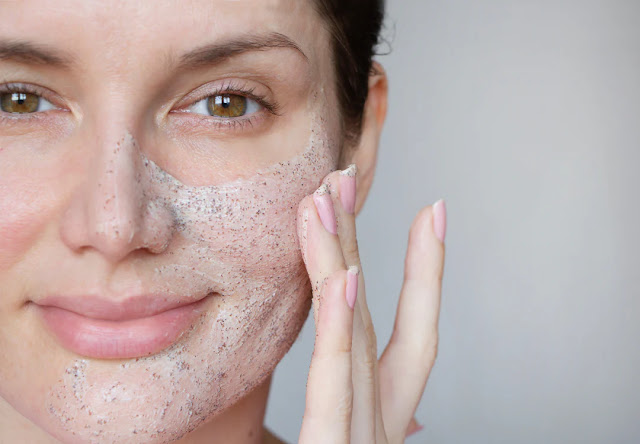Salicylic acid is one of the most well-known skin ingredients. Many love it for its effectiveness in providing clarity, especially for those who are acne-prone and often break out.

With such a powerful ingredient in your daily routine, we can’t help but wonder if further exfoliation can help or hurt the health, look, and feel of your complexion. That’s exactly what we want to explore in today’s blog post, and with any luck, we’ll answer all of your questions about exfoliation and using salicylic acid.
For those who are still a little confused about what salicylic acid is and how it benefits the skin, the next section is for you. If you’re already stuck in a skin care dilemma, you can skip to the next section.
What is salicylic acid?
Salicylic acid, also known as the acne nemesis, is one of the most commonly used members of the beta-hydroxy acid (BHA) family. A dermatologist favorite for combating problem skin that often breaks out with rashes and blemishes. This acid works on the surface of the skin to remove the buildup of dead skin cells. If these cells are left behind, you’ll find blemishes like pimples and blackheads appearing on your face as excess sebum, dirt, bacteria, and debris clog your pores. You’ll also find that salicylic acid is oil-soluble, which means it can penetrate sebum (the natural oil in your skin). Since salicylic acid has a smaller molecular size compared to other acids, it can penetrate the lower layers of the skin and get deep into the pores.
The beauty of salicylic acid is that it’s found in a range of formulas from over-the-counter to prescription products in varying proportions. This not only makes BHAs easy to find, but it also allows you to find the best product for your skin. Salicylic acid is known to damage dry and sensitive skin. For these skin types, a face wash or toner will work best, as it’s typically lower in acid than a serum.
If you want to learn more about salicylic acid and its benefits, read our dedicated blog post.
Do I need to exfoliate if I use salicylic acid?
No, not really, because salicylic acid is an exfoliant in its own right. As I mentioned before, it’s an ingredient in a variety of skincare products, from face washes to serums. This results in the acid being a regular exfoliant in your daily skincare routine. Using a salicylic acid-rich product with another exfoliant can lead to severe skin irritation and reactions.
If you want to continue to use salicylic acid products in conjunction with a physical exfoliant like a scrub, I recommend alternating between each product to benefit from these products. For example, use a salicylic acid face wash in the morning and a physical exfoliant at night.
Can I use cleansing and exfoliating products with salicylic acid?
No, avoid using cleansing and exfoliating products with salicylic acid as this can cause extreme irritation and dryness. As I said before, if you want to use both products in your skincare routine, it is most effective to alternate between each product.
Once your skin has developed a tolerance to salicylic acid, you can use salicylic acid twice a day in your skincare routine. This means you can use a BHA-rich product when it suits you, making sure you are not exfoliating in your routine.
For a physical facial exfoliant, I recommend using it at night because the abrasive action can make the skin feel temporarily sensitive. You will find that she calms down better at night when she is not exposed to free radicals such as UV rays, pollution, and other environmental factors. Using a serum with moisturizing ingredients like hyaluronic acid after exfoliation to hydrate and nourish the skin can combat long-term dryness and irritation.
Is salicylic acid an exfoliant?
Yes, it is, just like other chemical peels like glycolic, lactic, and malic acids. Salicylic acid can exfoliate without the use of physical facial peels, some of which often contain nutshell fragments, pumice, and other abrasive particles.
You’ll also find that salicylic acid’s small molecular size and oil-soluble properties allow it to penetrate the lower layers of the skin. When salicylic acid reaches the pores, it can deeply exfoliate and work on areas of the skin that facial peels can’t reach.
What type of scrub should I use?
There are a ton of different peels that are suitable for a variety of skin types. The following sections will help you understand which products are right for your skin type.
Oily Skin Types
Oily skin is prone to breakouts and may also be prone to acne due to excess sebum on the skin’s surface. Therefore, thorough exfoliation is required, which can be done with a physical exfoliant, such as a physical exfoliant or cleanser, or a chemical exfoliant, such as salicylic acid.
Acne-prone skin types
For acne-prone skin, it is best to choose products that contain chemical exfoliants, such as salicylic acid and glycolic acid. Although it may be tempting to exfoliate your skin to the point of being unrecognizable, this can be harmful to your skin because not only will you spread bacteria, leading to more breakouts, but you will also strip your skin of the essential oils and moisture it needs to keep its barrier healthy, hydrated, and radiant.
Dry skin types
To avoid unnecessary irritation, dry skin especially benefits from thick, creamy textures that are enriched with gentle acids, such as lactic acid and polyhydroxy acids. You may also benefit from physical facial peels, which also have a richer, creamier consistency.
Combination skin types
Since combination skin types have a mix of oily and dry skin areas, chemical peels are recommended as the best formula. Physical peels and physical devices should be avoided because they can cause increased sensitivity and irritation.


